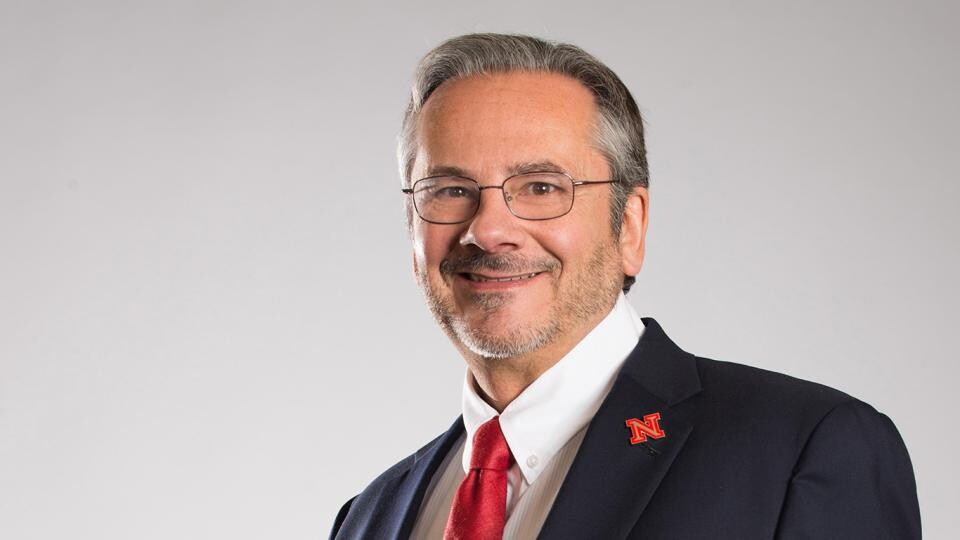
Dan Claes, professor and department chair of physics and astronomy, has been named a 2015 fellow of the American Physical Society. As the world’s largest society of physicists, the APS annually bestows fellowship status on no more than one-half percent of its current membership.
Claes was nominated by the APS Forum on Education. The forum cited his outstanding contributions to education initiatives focused on elementary particle physics, particularly his efforts to serve remote rural communities.
“Dan has been working on educational issues – especially rural educational issues, which suits Nebraska – for a very long time,” said UNL physicist Ken Bloom, who has known Claes since 2004. “He was a high school teacher before he went back to graduate school and became a professional physicist, so he has a background in working with those students.”
Bloom highlighted Claes’ co-development of the Cosmic Ray Observatory Project, or CROP, as a prime example of his educational influence. The statewide outreach program has engaged hundreds of Nebraska high schools in a hands-on effort to study cosmic-ray air showers.
Billions of high-energy cosmic particles strike Earth’s atmosphere every second, yielding showers of secondary particles that reach the ground and can be measured by relatively simple detectors. With assistance from Nebraska professors, university students and high school teachers recruited by Claes, high school students have had the opportunity to construct and install these detectors on school roofs across the state.
“Dan’s been a tireless leader of the project,” Bloom said. “He has worked very hard to get this project out there to schools in the more remote areas of Nebraska – to engage with teachers there and really do this institutionally.
“Dan is just really, amazingly conscientious. He’s very good on the details and follow-through and really making sure that a (multifaceted) project like this – one that involves so many people with so many interests – all gets pulled together and completed as a quality effort.”
Students who participate in CROP gain exposure to the scientific method and modern research techniques while getting a crash course in computer programming, data analysis and the presentation of empirical results. They also contribute basic research to the ongoing study of cosmic rays, whose origin and other properties are not yet fully understood.
“Certainly, as part of this, he’s really bringing his particle physics research into what he does,” Bloom said. “The whole project is based around particle detection and getting high school students involved at a level that is going to be educationally useful for them.
“He’s had a lot of success with getting teachers and students involved in the program and helping them take a look at future educations and careers in science.”
Claes has also developed and delivered many comic book-inspired presentations that make physics more accessible to younger and lay audiences. These talks have covered topics that include the radioactive origins of Marvel superheroes, the science of Tony Stark’s particle accelerator, and the force Superman generates when launching into flight.
From a research perspective, Claes has collaborated with Fermilab and the CERN laboratory to search for new phenomena – including supersymmetry and dark matter – that could expand the predominant Standard Model of particle physics. He has also worked to enhance public understanding of the Higgs boson following its 2012 confirmation at CERN’s Large Hadron Collider.
Claes joined UNL in 1996, becoming chair of the Department of Physics and Astronomy in 2007. He earned his doctorate in physics from Northwestern University.







